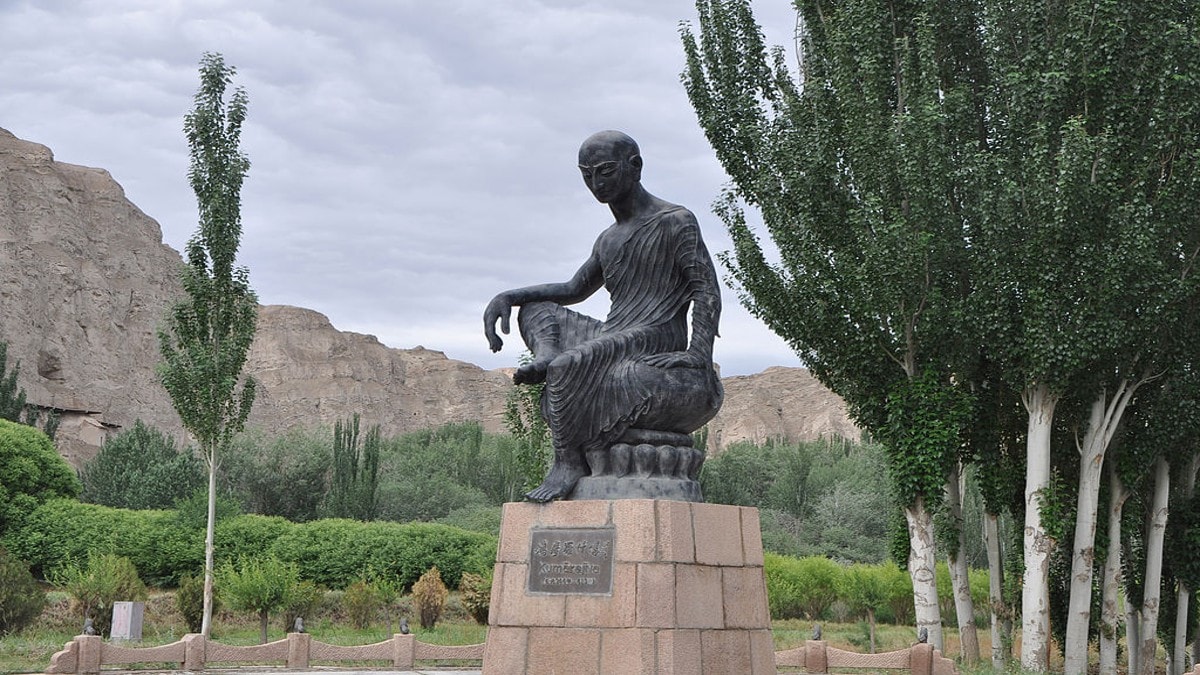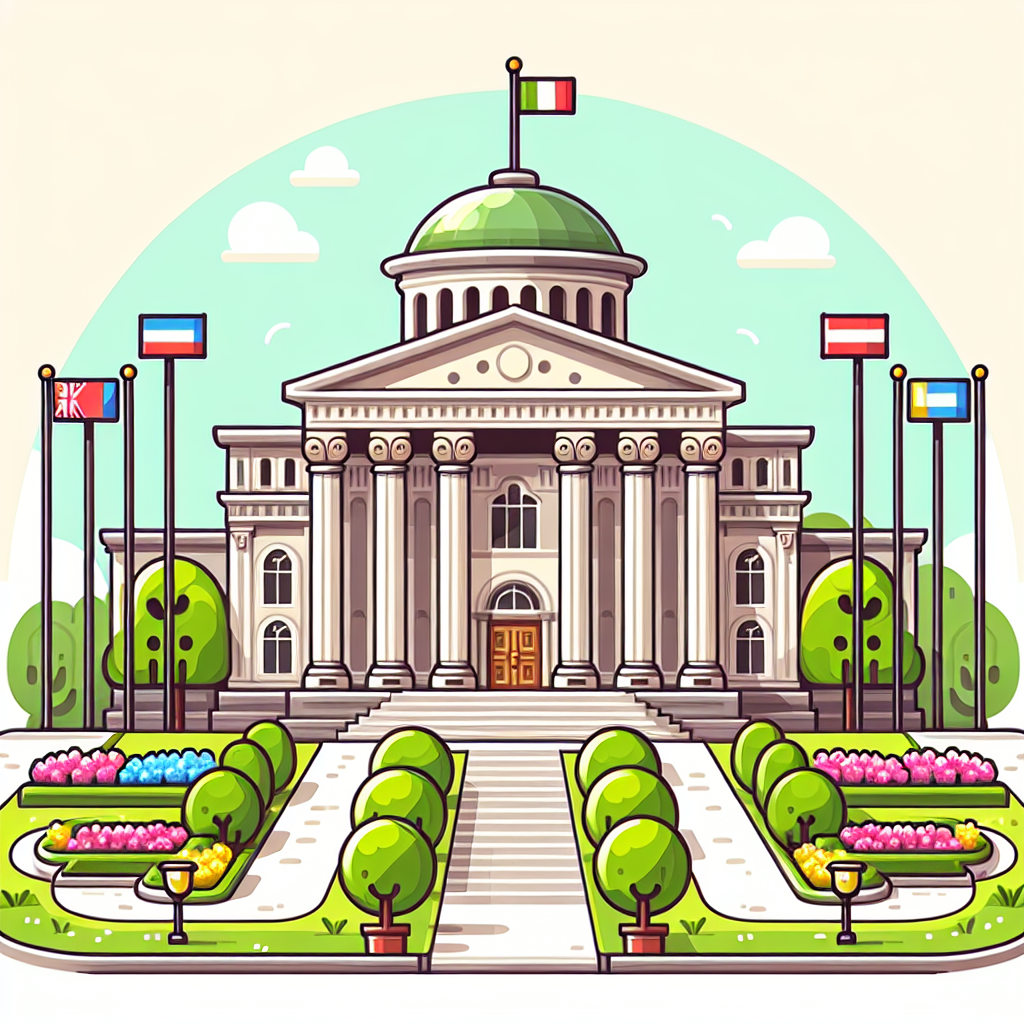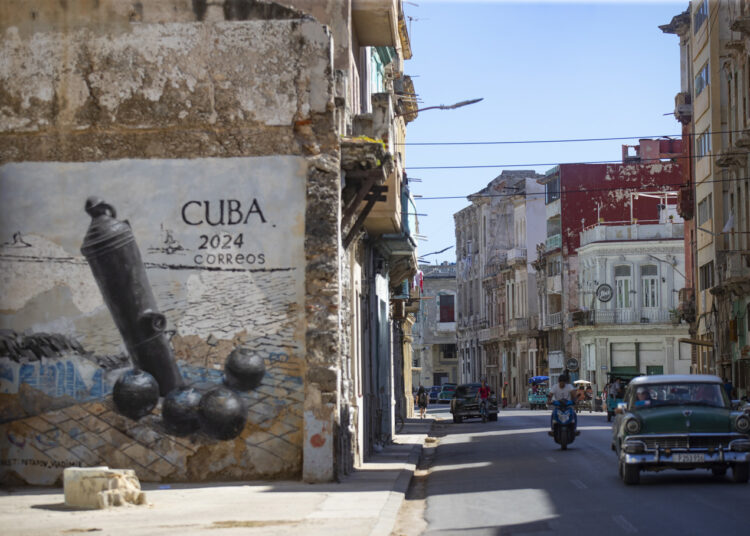
A few years ago, at a seminar, Indologist Lokesh Chandra said that the term ‘Silk Road’ was a misnomer. “Silk never travelled on this route. The Chinese used silk only as part of political diplomacy; to get horses, they supplied bales of silk,” he added.
According to Prof Chandra, the so-called Silk Road was more of a ‘Sutra Road’ as monks and pilgrims used this route to carry Sanskrit manuscripts and disseminate Hindu-Buddhist knowledge and philosophy. His assertion has been vindicated by the discovery of numerous manuscripts and “spectacular masterpieces of Buddhist monastic art”, as William Dalrymple writes in The Golden Road , in caves along the ancient route. Since antiquity, India’s links with Central Asia-Tarim Basin and the neighbouring Oxus and Badakhshan regions have been intense and interactive.
According to British historian Arnold Toynbee, these linkages go back to at least 1,700 years before the Christian era. One is reminded of this deep-rooted connection every time a Hindu takes a sankalp during a puja : The puja begins with the mention of Jambu-dvipa (comprising a large section of Eurasia), followed by Dakshina Parv (southern part of the Jambu-dvipa), Bharata Khand (Greater Bharat), Bharata Varsha (Bharat subcontinent), and ends with the reference of the locality in which the devotee resides. The Brahma Purana , translated into English by Bibek Debroy (2021), mentions these geographical regions.
It says: “The dvipas are Jambu, Plaksha, Shalmala, Kusha, Krouncha, Shaka, and Pushkara as the seventh...
Jambu-dvipa is located right in the middle of these and in the centre is Meru, the golden mountain...
The earth is like a lotus and the mountain is established like its pericarp...
Bharata is said to be the first varsha, and Kimpurusha is the one that comes next. Harivarsha is to the south of Meru. Ramyaka is to the north and Hiranmaya is next to it.
O supreme Brahmanas! Uttarkuru is like Bharata. Each of these extends for 9,000 yojanas. Ilavrita is in the centre and the golden mountain of Meru rises up there.
O immensely fortunate ones! In four directions from Meru, Ilavrita extends for 9,000 yojanas.” According to the Markandeya Purana , again translated by Debroy (2019), the earth in Jambu-dvipa “rises up in the middle and slopes downwards to the north and the south”. The elevated land is called Ilavrita, in whose centre is Mount Meru.
The Vayu Purana mentions the mountains, rivers and valleys of Jambu-dvipa in detail. In The Geography of the Puranas (1966), Prof SM Ali writes that the “geographical section of this (Vayu) Purana is more complete and detailed than that found in any other Puranas”. According to him, the description of the northern regions of Jambu-dvipa “covers a very vast area, from the Urals and the Caspian to the Yenisel and from the Turkestan, Tien Shan ranges to the Arctic.
It describes the topography of the whole land very accurately and in some cases picturesquely”. The area across the Himalayas and Hindukush from Pamir up to the Arctic is known in the Puranas and the epics as Uttarkuru. The Arctic is referred to as Somagiri.
There are numerous references to the two regions in the Ramayana and the Mahabharata . In the Ramayana , for instance, Sugriva, while sending the monkeys to the north in search of Sita, describes the route and the countries in that direction. Among others, he commands them to search Sita in the lands and towns of the Dardas, Kambojas, Yavanas and Shakas.
He says that Somagiri has no national boundaries; it is without the sun and yet very much lighted. The story of Kumarajiva (344-413 AD), born to a Kashmiri father, probably a minister in the Takshashila royal court, and a Kuchean mother, is a reminder of India’s deep connections with the Central Asian region — and also how much its civilisational/cultural spread has shrunk in the last two millennia. Kumarajiva, after all, studied Buddhism in Kashmir, but for Vedas he chose to visit Kashgar in today’s Xinjiang region.
It’s pertinent to note that the land where Kumarajiva went to study Vedas was the hub of Buddhism, disputing the predominant Hindu-Buddhist conflict narrative put forward by colonial-Leftist historiography. Kucha, in the northern Tarim basin, for instance, was a centre of Buddhist learning, and from here Indian music spread to China. Similarly, Yarkand and Khotan (which tradition says was built by King Ashoka’s son Kutsan in 240 BC) in northern Tarim valley were centres of Mahayana Buddhism, while Kashgar, Kucha and Turfan were the hubs of Hinayana Buddhism.
What further manifests the Hindu-Buddhist cultural continuum in the region is that “not very far” from a monastery in Miran, as Dalrymple writes in The Golden Road , “some of the very earliest surviving fragments of the text of the Mahabharata have recently been dug up”. While the Indian influence in the so-called Silk Road region had been intense and overwhelming, the Chinese presence appearsed to be cursory, at best. The Chinese, in fact, were late entrants in Central Asia.
According to eminent scholar Rahul Sankrityayan, as he writes in Madhya Asia Ka Itihas (History of Central Asia), when Chinese envoy Chiang Kyang, sent by Chinese emperor Wi-ti (141-87 BC), came to Central Asia to have the first-hand information about the region and to persuade the Tusharas (Yueh-chis) to return to their original homeland, he found Indian and Chinese goods in Bactria brought by Indian traders. So, till the 2nd century BC, the Chinese were largely clueless about Central Asia, as Indians traders introduced both India and Chinese goods to the region. To this, author Bertil Lintner adds in his book, The End of the Chinese Century? , that the “traders came from a multitude of countries, and very few, if any, would have been Chinese.
Lintner further reminds the readers how the Chinese state during that era had “dissociated itself with trade, and most trade was conducted in China by private initiative”. In fact, the Tang Code of the Emperor Taizong (627-649 AD) “viewed commerce as polluting and did not allow officials above the fifth rank (out of nine ranks) to enter marketplaces”. This explains why Roman coins, found in abundance in western and southern India, are conspicuous by their absence in China.
Prof Valerie Hansen of Yale University, thus, writes in Silk Road: A New History : “The earliest European coins unearthed in China are from Byzantium, not Rome, and date to the 530s and 540s. Vague rumours to the contrary, not a single Roman coin has turned up in China — in contrast to the thousands of Roman gold and silver coins excavated on the south Indian coast, where Roman traders often journeyed.” Prof Hansen explains how the term “Road” was as misleading as the term “Silk”.
She writes, “The term ‘Silk Road’ is a recent invention. The peoples living along different trade routes did not use it. They referred to the route as the road to Samarkand (or whatever the next major city was), or sometimes just the ‘northern’ or ‘southern’ routes around the Taklamakan desert.
” She continues, “From its inception, the Silk Road was shown as relatively straight and well-travelled, but it never was. Over a hundred years of archaeological investigation have revealed no clearly marked, paved route across Eurasia — nothing remotely like the Appian way of Rome — but instead a patchwork of drifting trails and unmarked footpaths.” What further put a question mark on the imagined grandeur of the Silk Road was the fact that the actual volume of trade along this “patchwork of drifting trails and unmarked footpaths” was small.
The term Silk Road is a 19th century invention, first coined by a German geographer, Ferdinand von Richthofen in 1877. In the English language world, however, it became a buzzword after EP Dutton came up with The Silk Road, an English translation of a Swedish book by Sven Hedin, one of von Richthofen’s students. Dutton’s 1936 book became a bestseller and the rest is history.
Xi Jinping’s China has taken to the Silk Road myth much like a duck to water. In fact, in the first of the two speeches in Kazakhstan in 2013, launching what was then called the One Belt, One Road (OBOR) — it’s now being called the Belt and Road Initiative (BRI) — Xi invoked the ancient Silk Road connecting the East with the West. “Today, as I stand here and look back at history, I can almost hear the camel bells echoing in the mountains and see the wisps of smoke rising from the desert, and this gives me a specially good feeling,” Xi was reported as saying.
A feel-good initiative is no guarantee of success. More so when it’s the result of falsehood, deception, and a myth-making exercise. The BRI finds its inspiration from a road that never existed in reality.
An idea born out of myth is often bound to end up becoming a fantasy. The BRI is going the Silk Road way. But, then, it should not surprise people.
For, China itself is an imagined state born out of force, deceit and hegemony. More about this in the next section of the series. (This is Part 3 of the ‘China: Myth Vs Reality’ series.
The next article will talk about how China, as we see it today, is the creation of a communist myth-making exercise.) Views expressed in the above piece are personal and solely those of the author. They do not necessarily reflect Firstpost’s views.
.














